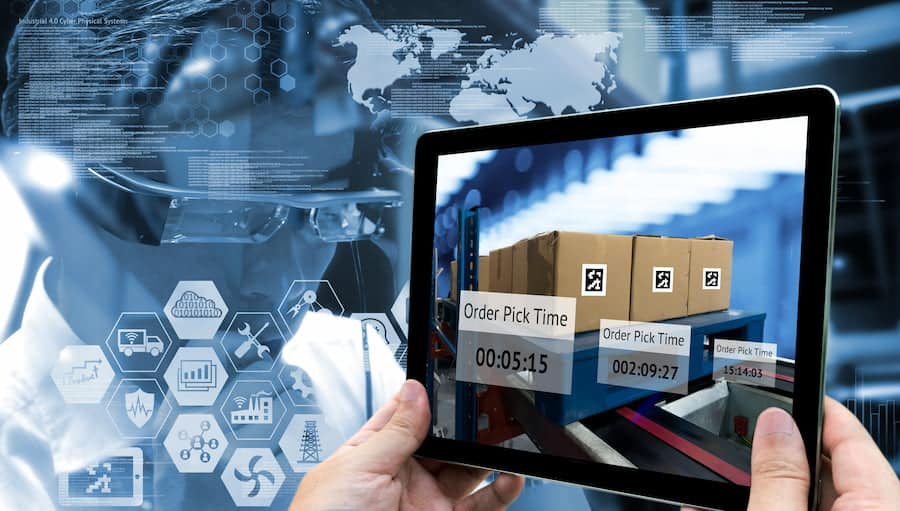Here’s a quick riddle for you:
What’s something that can’t be touched but is consumed by everyone every day?
Well, there are probably many possible answers to this, but since you have already read the blog title, I suppose you must’ve cracked the relevant one.
That’s right… digital products!
A JP Morgan study revealed that over $54 billion are spent on digital goods annually.
But the growing trend toward digital isn’t just limited to digital products. In general, the global ecommerce market reached US $16.6 trillion in 2022. Quick international shipping and global reach have made starting an online business a lucrative opportunity like never before.
Thus, whether you want to be a part of the US $455.2 billion gig economy and make some money on the side or build an entire online business and make a living online, the question is, what’s best to sell online: physical vs digital products?
Let’s find out!
NOTE: This article is talking to product owners and sellers trying to decide which product type to sell (that will also work well to attract affiliates). If you’re curious about this topic from the perspective of an affiliate marketer, check out our affiliate marketing physical vs digital products post.
Physical Products vs Digital Products: Definition and Examples
Physical products are tangible goods that you can sell and ship to the customers. You need to constantly reproduce and replenish them to maintain the continuity of your ecommerce business.

Physical Product Examples
- Consumables
- Cosmetics
- Electronic appliances
- Jewellery
- Kitchen essentials
- Toys
- Video games, CDs, etc.
On the other hand, digital products are intangible assets you can sell and distribute repeatedly in electronic format without replenishing the inventory.
Customers can purchase and access them through the internet without any physical installation requirement, as they come in downloadable or streamable formats.
Digital Product Examples
- Courses
- Ebooks
- Videos
- Stock photos
- Templates
- Spreadsheets
- Fonts, icons, logos
- Infographics
- Digital art
- Animations
- Graphic templates
- Online magazines
- Software
- Online tools
- Research
When considering selling online and trying to choose between physical and digital products, it’s essential to be aware of both their advantages and disadvantages.
Pros of Selling Physical Products for Ecommerce
1) Easier to Demonstrate
An obvious advantage of selling a physical product is its tangibility. Although customers have limited contact with the products, products’ definite physical form allows you to capture their usable features in impactful product images. This quality makes them easy to describe and understand, which is lacking in digital products.
For instance, a sharp image of a packet of coffee placed against the right setting immediately brings a cup of aromatic brew to your mind.
2) Higher Pricing
In most cases, customers still pay higher prices for tangible products. Some researchers point out that having something tangible causes a customer to have a more heightened psychological sense of ownership over the product. They are willing to put a higher value on such products. Therefore, ecommerce sellers selling physical products can often persuade customers to accept a higher price, provided the value they create is prominent.
3) Straightforward Transaction
Once you deliver your physical goods seamlessly into your customers’ hands, it requires minimal follow-up. Of course, brands have the added burden of managing product returns and exchanges. But you can always reduce its impact by setting up efficient return logistics.
Other than that, there is a small possibility that your customers will require a detailed explanation from you to get started using a physical product. But typically, these products are straightforward to understand and use.
On the other hand, getting buyers to understand how a digital product works – especially software – may require elaborate explanations and how-to content.
4) It’s Easy to Explain to Your Family What You Actually Do for a Living!
Only those who have had tricky career conversations with their loved ones over dinner would understand this.
Although selling intangible things online may not be utterly alien to them, many people have difficulty grasping the non-traditional nature of your digital products. But that’s not the case with physical products!
Cons of Selling Physical Products for Ecommerce
1) The Need to Pre-purchase Goods
If you are working with a manufacturer, the first and constant concern while selling physical products online is having to place a minimum, a large order. It’s a practice that can easily cause you to leave money on the table – because God forbid, if the market fluctuates and the trend dies down, your products could no longer be positioned to sell.
2) Inventory Management
Another challenge while selling physical products online is the legwork behind sourcing and managing inventory. It takes up maximum effort, time, and budget. Warehousing can also get complicated. Even if you manage goods from your garage, you are still at risk of damage caused by water, fire, or theft. Creating too much merchandise can be costly, while shortage can be equally detrimental.
3) Shipping Expenses
Physical goods and shipping expenses are a hand-in-glove combination. Besides the cost of packaging and handling, you must also incur hefty shipping charges. Not to mention, logistics can be an incredibly time-consuming affair for online sellers without the support of a reliable logistic partner. All of these result in lower profit margins and time-consuming processes.
4) Overhead Expenses
You will need to hire and train people to manage inventory and warehouse operations smoothly, which gets reelected in the higher upfront investments and overhead expenses.
5) Difficulty in Scaling Up
An online store selling physical products is much slower and harder to scale than one selling digital products. The products are also susceptible to wear and tear and becoming obsolete.
Sure, digital products may also be outdated over time. But you can update and revise them without exhausting all of your resources.
That is not the case with physical products. Suppose you are an online cosmetics brand. If you want to expand your product line in natural care solutions, imagine the excruciating work of managing research, development, sourcing, manufacturing, supply chain, packaging, etc. It’s hard to stay agile when you sell physical products!
Pros of Selling Digital Products for Ecommerce
1) Lower Overhead Costs
Think about the upfront costs you would bypass by selling digital products: raw material, manufacturing, storage, warehousing, packaging, order fulfilment, and shipping. And don’t forget the savings you will enjoy by avoiding real estate rent or loans, electricity bills, inventory insurance, staff salaries, etc.
2) High Profit Margins
One of the most appealing benefits of lower overheads of digital goods is the irresistibly high-profit margins. Sure, there is still some “digital” stuff that you must invest in —building a website, social media and email marketing, payment integrations, etc. But it is more likely to lead to higher profits.
3) Infinite Stock
With digital products, you’ll never go out of stock. You can scale with infinite sales opportunities without investing in additional storage or resources. As long as they are updated, the risk of digital products becoming less relevant over time is negligible. Lastly, there is no limit to the variety of products you can expand into.
4) Lower Barriers to Entry
A digital product is faster to make and much less risky than a physical one. You are also less dependent on suppliers or middlemen. Thus, if you have a skill that can solve a painful problem, you can start selling that as a valuable resource immediately.
An online marketplace like Clickbank makes this even more straightforward by connecting you with elite affiliate marketers. Along with a vast affiliate marketplace where you can list your product for affiliates to promote, we also offer robust tools and services you will need to scale your brand online.
5) Instant Delivery
The most appealing aspect of a digital product is that customers do not have to wait days to receive the product – just a few clicks and they get their digital file. Even refunds are simpler, as they do not involve repacking, reshipping, or restocking.
That’s not to say that digital products are devoid of any challenges. While there aren’t tons of those, the following are worth mentioning when compared to physical goods.
Cons of Selling Digital Products for Ecommerce
1) Piracy
Digital products are especially prone to piracy, as it is easy for someone to steal digital files and distribute them under their own name. In North America alone, the revenue lost due to unlicensed software came to US$ 9.5 billion during 2025-17.
2) Crowded Market
Expect some stiff competition. And why not? Easy set-up, instant delivery, lower overheads—competition is bound to get tough. You will also compete with those offering free alternatives to your digital products. So, unless you’re able to provide premium value, withstanding such competitive headwinds is often quite challenging.
3) Time-consuming Product Development
Developing a market-ready and high-quality digital product is never without several cycles of planning and testing. And once you have a product that works, you know that market conditions won’t stand still – when it comes to digital products, product development is never “done.”
Physical vs Digital Products: The Final Say
So, what should you do? Do you appreciate the higher pricing and perceived value of physical products, or the low overhead and high margins of digital products?
In the end, selling digital products is more streamlined. There is no need to hold the inventory nor any logistics hassle.
But for the physical goods or digital goods debate, the answer ultimately comes down to what works best for your business model. Your product idea, niche market, risk tolerance, and passion should guide you in choosing the right option.
With that said, there is no denying that you can sell both!
Clickbank supports you in this by connecting you with expert affiliates who promote physical and digital products. With a robust upsell flow, you can include both types of products in the same funnel and get shoppers to buy them in a single transaction!
This gives you maximum flexibility in finding a combination of products to maximize cart value and attract the very best affiliates to promote your products.
Lastly, if you’re looking to learn the ropes of affiliate marketing as a seller or product owner, be sure to check out ClickBank’s free ecommerce to direct response success center, which reveals how to turn your product into an “offer” that affiliate marketers will be clamoring to promote. Check it out!
Author Bio: Nicholas Woodward

This article was written by Nicholas Woodward, the Country Manager at PACK & SEND, a leading and respected brand in ecommerce, logistics, and freight delivery solutions. With over 15 years of experience in the logistics, ecommerce, retail, and franchise industries. Nicholas has thought leadership and expertise across strategic planning, leadership, ecommerce, B2C logistics, and organisational performance & growth. Connect with Nicholas on LinkedIn.







